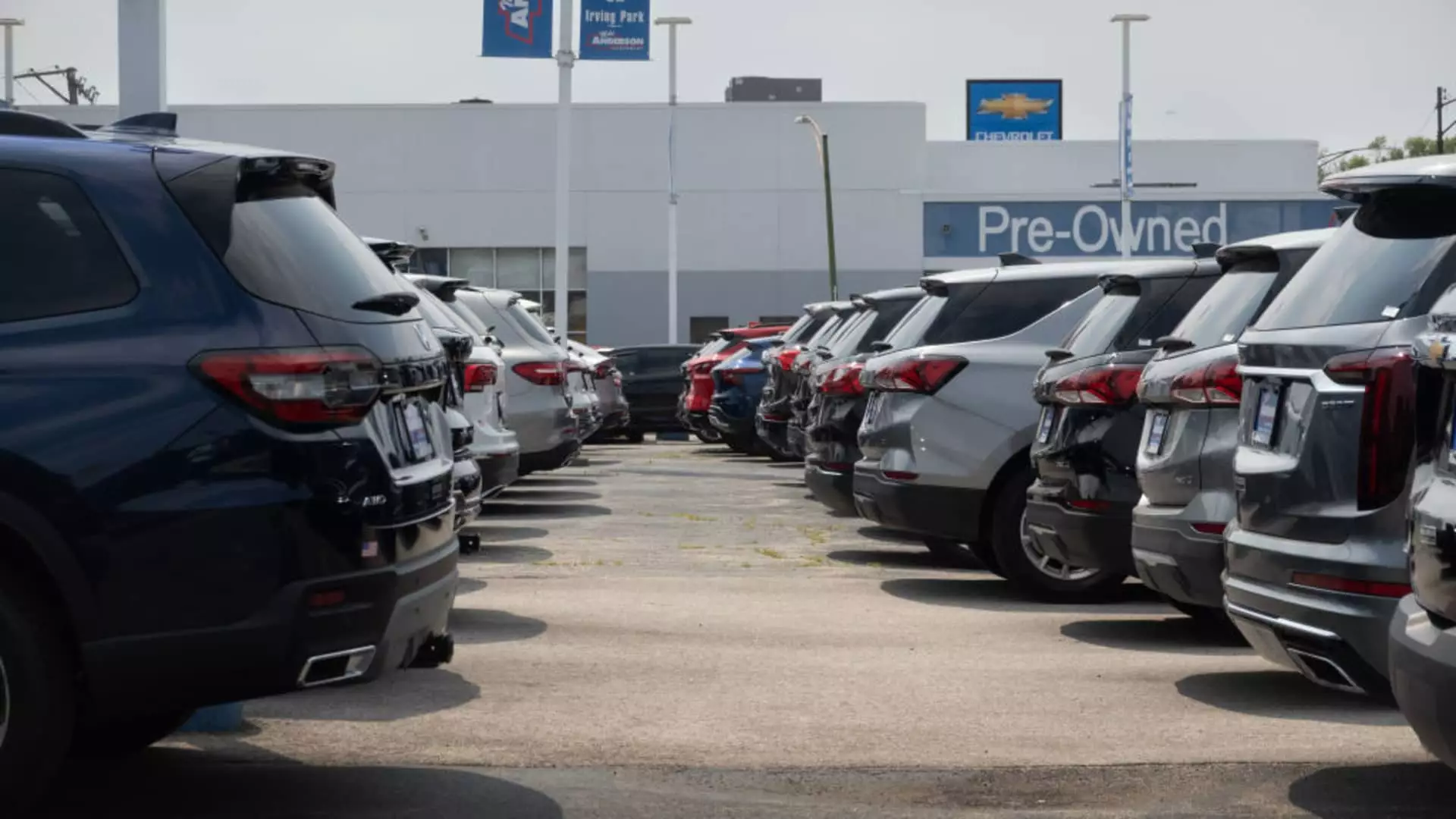In recent months, a troubling trend has emerged in the world of automotive loans in the United States: an increasing number of borrowers are now facing negative equity on their vehicle loans. According to a report from Edmunds.com, the average negative equity for auto loans reached a staggering $6,458 by the third quarter of 2023, surpassing the previous quarter’s average of $6,255 and significantly higher than the $5,808 recorded just one year earlier. This escalation in negative equity, or being “upside-down” on a loan, raises concerns about the financial health of American consumers.
While being upside-down on a loan doesn’t immediately signal financial ruin, the widespread nature of this phenomenon reflects growing pressure on household finances. The Federal Reserve’s recent findings showed an alarming increase in delinquency rates for auto loans, signaling distress among borrowers that extends beyond mere loan value concerns. With delinquency rates climbing past the levels seen before the coronavirus pandemic, it’s evident that many Americans are struggling to keep up with their financial commitments.
Understanding the Implications of Negative Equity
Jessica Caldwell, head of insights at Edmunds, emphasizes that while individual cases of owing just a couple of thousand dollars more than a vehicle’s worth may seem manageable, the statistics are more worrisome when considering those who are significantly upside-down. Reports indicate that over 20% of consumers with negative equity are facing debts exceeding $10,000 on their auto loans, with 7.5% of these borrowers owing more than $15,000. This situation is particularly troubling as it suggests a significant portion of the population is financially vulnerable, potentially jeopardizing their credit ratings and future borrowing ability.
In this economic climate, consumers must be proactive in managing their auto loans. Experts suggest that one way to alleviate the burden of negative equity is by retaining their vehicles for a longer duration. This strategy can minimize depreciation and help individuals build equity over time, countering the immediate effects of a high-stakes loan.
Strategies for Responsible Vehicle Ownership
Ivan Drury, director of insights at Edmunds, urges consumers to reassess their ownership habits and reflect on their long-term financial goals. With the current market scenario characterized by high prices and interest rates, it is vital for borrowers to look beyond just the monthly payment. Drury warns that opting for lengthy seven-year auto loans, especially if a consumer plans to change vehicles more frequently, can lead to an inevitable spiral into negative equity.
The observed rise in negative equity is also linked to consumer behavior during unprecedented market conditions. Car buyers in 2021 and 2022, motivated by scarcity and lingering pandemic effects, often paid inflated prices for new vehicles. As inventory levels rebounded, vehicle values have depreciated more rapidly than anticipated. This rapid devaluation, coupled with inflated purchase prices, has left many consumers caught in a cycle of debt that could take years to escape.
The ongoing challenges related to upside-down auto loans underscore a broader narrative about economic resilience in the face of evolving market dynamics. As vehicle ownership continues to strain finances for many Americans, it’s essential to embrace responsible lending practices, reinforced by financial literacy and informed decision-making. By strategically managing their loans and adapting to shifting market conditions, consumers have the potential to navigate these turbulent waters successfully.

